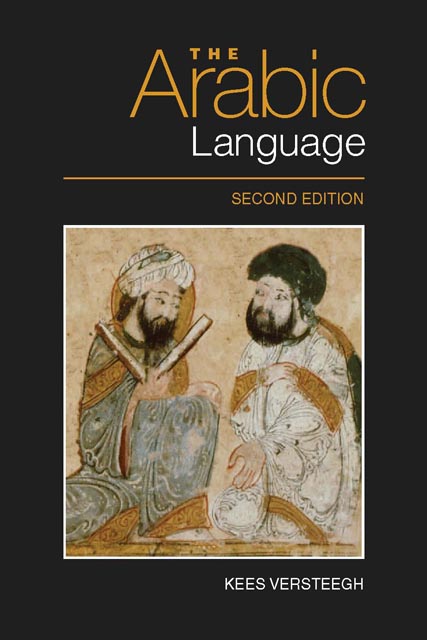Book contents
- Frontmatter
- Contents
- Preface to First Edition
- Preface to Second Edition
- List of Figures and Maps
- List of Tables
- Note on Transcription and Glossing
- 1 The Study of Arabic in the West
- 2 Arabic as a Semitic Language
- 3 The Earliest Stages of Arabic
- 4 Arabic in the Pre-Islamic Period
- 5 The Development of Classical Arabic
- 6 The Structure of Arabic
- 7 The Arabic Linguistic Tradition
- 8 The Emergence of New Arabic
- 9 Middle Arabic
- 10 The Study of the Arabic Dialects
- 11 The Dialects of Arabic
- 12 The Emergence of Modern Standard Arabic
- 13 Diglossia
- 14 Bilingualism
- 15 Arabic as a Minority Language
- 16 Arabic Pidgins and Creoles
- 17 Arabic as a World Language
- Bibliography
- List of Abbreviations
- Index
8 - The Emergence of New Arabic
Published online by Cambridge University Press: 18 November 2022
- Frontmatter
- Contents
- Preface to First Edition
- Preface to Second Edition
- List of Figures and Maps
- List of Tables
- Note on Transcription and Glossing
- 1 The Study of Arabic in the West
- 2 Arabic as a Semitic Language
- 3 The Earliest Stages of Arabic
- 4 Arabic in the Pre-Islamic Period
- 5 The Development of Classical Arabic
- 6 The Structure of Arabic
- 7 The Arabic Linguistic Tradition
- 8 The Emergence of New Arabic
- 9 Middle Arabic
- 10 The Study of the Arabic Dialects
- 11 The Dialects of Arabic
- 12 The Emergence of Modern Standard Arabic
- 13 Diglossia
- 14 Bilingualism
- 15 Arabic as a Minority Language
- 16 Arabic Pidgins and Creoles
- 17 Arabic as a World Language
- Bibliography
- List of Abbreviations
- Index
Summary
The linguistic situation in the Islamicempire
The period of the Islamic conquests immediately afterthe death of the Prophet in 10/632 constituted adrastic change in the history of the Arabiclanguage. Within a few decades, speakers of Arabichad spread over an enormous territory and imposedtheir language on the inhabitants of the conqueredcountries. Speakers of Arabic had been resident inSyria and Egypt before Islam (see above, Chapter 3),but their language had never been a language ofprestige outside the peninsula, and consequentlythere had never been an incentive for non-Arabs inthese countries to learn Arabic. In this chapter, weshall look at the consequences of the process ofArabicisation after the conquests for the structureof the language. First, we shall describe thelinguistic situation in the conquered territories;then the changes in the language will be discussed;finally, we shall look into the explanations thathave been advanced for these changes.
The historical details of the conquests are known fromthe detailed accounts of the Muslim historians, butmuch less is known about the process ofArabicisation. In the earliest stages of theconquests, the military efforts of the Islamicauthorities in Medina were aimed at the politicalcontrol of the Arabic-speaking tribes, first withinthe peninsula during the so-called ridda wars, and then outsidethe peninsula, where since time immemorialArabic-speaking tribes had roamed the Syrian desertand Iraq. The initial motive behind the conquestsmay have been the idea that all Arabic-speakingpeoples should be united under the banner of Islam,while the conquest of the neighbouring sedentaryareas occurred more or less as an afterthought.
Because of the lack of relevant documents, it is hardto tell what the rate of Arabicisation was, and inmost cases we can only make a guess as to the periodof time that was needed for Arabic to be adopted asthe main language of the empire. We do know thatArabicisation was much more complete, and possiblyeven progressed at a faster rate than the process ofIslamicisation.
- Type
- Chapter
- Information
- The Arabic Language , pp. 126 - 151Publisher: Edinburgh University PressPrint publication year: 2014



